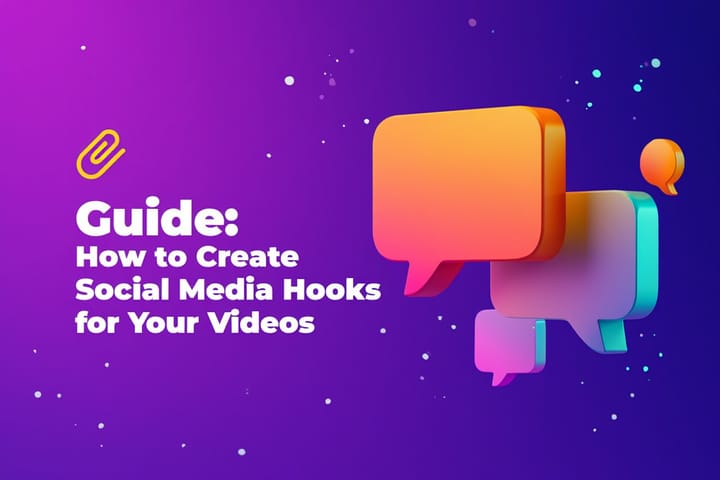Social Media Analytics for Brands: The Metrics You Should Track in 2025

In the fast-paced world of social media, brands are constantly vying for attention. With a plethora of platforms available, it can feel like trying to catch confetti in a windstorm. But fear not! By focusing on the right key performance metrics (KPMs), brands can cut through the noise and figure out what really matters. So grab your favorite beverage, settle in, and let’s dive into the metrics that can make or break your social media strategy.
Understanding Key Performance Metrics
Before we dive into the nitty-gritty, let’s clarify what we mean by key performance metrics. Think of them as the GPS for your social media journey. They help you navigate the winding roads of engagement, reach, and conversion. Without them, you might end up lost in the vast digital wilderness, wondering why no one is liking your cat memes.
Why Metrics Matter
Metrics are the lifeblood of any social media strategy. They provide insights into how your audience is interacting with your content, which can inform everything from your posting schedule to your overall brand voice. Ignoring metrics is like trying to bake a cake without a recipe - sure, it might turn out okay, but more often than not, you’ll end up with a gooey mess.
Moreover, metrics help in assessing the effectiveness of your campaigns. Are those adorable puppy videos really bringing in followers, or is it time to switch gears? By keeping an eye on your KPMs, you can make informed decisions that lead to better results. Tracking these metrics over time allows you to identify trends and patterns, which can be invaluable for future content planning. For instance, if you notice that your audience responds particularly well to behind-the-scenes content, you can adjust your strategy to include more of that type of post, ultimately enhancing engagement and loyalty.
The Basics of Social Media Metrics
There are a few foundational metrics that every brand should be aware of. These include likes, shares, comments, and followers. While they might seem basic, they provide a solid starting point for understanding your audience's engagement levels.
However, don’t let these numbers fool you into thinking you’ve hit the jackpot. A high follower count doesn’t necessarily mean your brand is thriving. It’s essential to look deeper and analyze how these metrics interact with each other. After all, a million followers who never engage is like having a room full of people who are all staring at their phones—awkward and not very productive. Additionally, metrics like engagement rate, which takes into account the number of interactions relative to your follower count, can offer a more nuanced view of your content's performance. This metric can reveal whether your followers are genuinely interested in your posts or if they’re merely passive observers. Understanding these dynamics can empower you to create more targeted and impactful content that resonates with your audience on a deeper level.
Engagement Metrics: The Heartbeat of Your Brand
Engagement metrics are where the magic happens. They reflect how your audience interacts with your content, and they can tell you a lot about what resonates with your followers. If likes are the polite applause of social media, engagement metrics are the standing ovation.
Likes, Comments, and Shares: The Holy Trinity
Let’s start with the basics: likes, comments, and shares. These three metrics are often referred to as the holy trinity of engagement. Likes are great for a quick ego boost, but comments and shares are where the real action is. Comments indicate that your content has sparked a conversation, while shares mean your audience finds it valuable enough to pass along to their friends (or at least their social media followers).
To really understand your audience, keep an eye on the ratio of likes to comments and shares. If you have a ton of likes but barely any comments or shares, it might be time to rethink your content strategy. Maybe your followers are just being polite, or perhaps your content isn’t as engaging as you thought. Either way, it’s a sign to dig deeper.
Engagement Rate: The Real Deal
Engagement rate is the golden child of social media metrics. This metric takes into account the number of interactions (likes, comments, shares) relative to your total follower count. It’s a more accurate reflection of how well your content is resonating with your audience. A high engagement rate means your followers are not just passive observers; they’re actively participating in your brand’s story.
To calculate your engagement rate, use the formula: (Total Engagements / Total Followers) x 100. This will give you a percentage that you can use to compare across different posts or campaigns. If you notice a particular post has a significantly higher engagement rate, take note! It might just be the secret sauce you need for future content.
Reach and Impressions: The Visibility Game
While engagement metrics tell you how your audience is interacting with your content, reach and impressions provide insight into how many people are actually seeing it. Think of reach as the number of unique users who have seen your post, while impressions measure how many times your post has been displayed, regardless of whether it was clicked or not. It’s like the difference between a crowded concert and a cozy coffee shop—both have their charm, but they serve different purposes.
Why Reach Matters
Understanding reach is crucial for gauging the effectiveness of your social media campaigns. If your reach is low, it might mean your content isn’t being distributed widely enough. This could be due to a lack of promotion or simply because your audience isn’t engaging with your posts enough to trigger the algorithm’s love.
To boost your reach, consider experimenting with different types of content, posting at various times, or even collaborating with influencers who can help amplify your message. Remember, the goal is to get your content in front of as many eyes as possible, so don’t be afraid to think outside the box!
Impressions: The Bigger Picture
Impressions are like the cherry on top of the social media sundae. They provide context for your reach by showing how often your content is being displayed. A high number of impressions with a low reach could indicate that your posts are being shown multiple times to the same audience, which can be both good and bad. It’s great if your content is resonating, but it can also mean you’re not expanding your audience.
To make the most of your impressions, focus on creating shareable content that encourages your followers to spread the word. This could be anything from a hilarious meme to a thought-provoking infographic. The more your content is shared, the more impressions you’ll rack up, and the more people will become aware of your brand.
Conversion Metrics: Turning Engagement into Action
At the end of the day, social media is not just about likes and shares; it’s about driving action. Conversion metrics help you understand how well your social media efforts are translating into tangible results, whether that’s sales, sign-ups, or downloads. If engagement is the party, conversions are the after-party where the real magic happens.

Click-Through Rate (CTR): The Gateway to Conversions
Click-through rate (CTR) is a critical metric for measuring how effective your calls to action are. It tells you the percentage of people who clicked on a link in your post compared to the total number of people who viewed it. A high CTR means your audience is intrigued enough to take the next step, while a low CTR might indicate that your content needs a little more pizzazz.
To improve your CTR, experiment with different types of calls to action. Instead of the usual “click here,” try something more engaging like “discover the secret” or “unlock your potential.” A little creativity can go a long way in enticing your audience to take action.
Conversion Rate: The Ultimate Goal
Conversion rate is the holy grail of social media metrics. It measures the percentage of users who take a desired action after clicking through from your social media post. This could be anything from making a purchase to signing up for a newsletter. A high conversion rate indicates that your social media strategy is not just driving traffic, but also effectively converting that traffic into loyal customers.
To boost your conversion rate, ensure that your landing pages are optimized for user experience. If users click through only to find a confusing or cluttered page, they’re likely to bounce back to their social media feed faster than you can say “abandoned cart.”
Audience Insights: Knowing Your Followers
Understanding your audience is key to crafting content that resonates. Audience insights provide valuable information about who your followers are, what they like, and how they interact with your brand. If engagement metrics are the heartbeat of your social media strategy, audience insights are the brain—guiding your decisions and helping you connect with your followers on a deeper level.
Demographics: Who Are Your Followers?
Demographics provide a snapshot of your audience’s age, gender, location, and interests. This information is crucial for tailoring your content to meet the needs and preferences of your followers. For example, if you discover that a significant portion of your audience is made up of millennials, you might want to incorporate more contemporary references and trends into your posts.
However, don’t fall into the trap of making assumptions based solely on demographics. People are complex, and interests can vary widely within any demographic group. Use demographics as a starting point, but be sure to dig deeper into your audience’s behavior and preferences.
Audience Behavior: What Makes Them Tick?
Audience behavior metrics provide insight into how your followers interact with your content. This includes data on what types of posts they engage with most, when they’re most active, and how often they share your content. Understanding these behaviors can help you create a content strategy that aligns with your audience’s preferences.
For example, if you notice that your followers are most active in the evenings, consider scheduling your posts for that time. Or, if video content consistently garners more engagement than static images, it might be time to invest in some video production skills. You can also follow our guide to create more engaging and virals videos on Social Media. The key is to stay flexible and adapt your strategy based on what the data tells you.
Tools for Tracking Metrics
Now that you’re armed with knowledge about key performance metrics, it’s time to talk about how to track them. Luckily, there are plenty of tools available to help you keep tabs on your social media performance. From analytics dashboards to scheduling tools, these resources can make your life a whole lot easier.

Social Media Analytics Tools
Many social media platforms come equipped with their own analytics tools. Facebook Insights, Twitter Analytics, and Instagram Insights all provide valuable data about your posts’ performance. These tools can help you track engagement, reach, and audience demographics, allowing you to make informed decisions about your content strategy.
If you’re looking for a more comprehensive view, consider using third-party analytics tools like Hootsuite, Sprout Social, or Buffer. These platforms aggregate data from multiple social media accounts, making it easier to track performance across the board. Plus, they often come with additional features like scheduling and content curation, which can save you time and effort.
Setting Goals and Benchmarks
Tracking metrics is only half the battle; setting goals and benchmarks is equally important. Establishing clear objectives for your social media strategy will give you something to strive for and help you measure success. Whether it’s increasing your engagement rate by 20% or growing your follower count by 500, having specific goals will keep you focused and motivated.
Once you’ve set your goals, regularly review your metrics to see how you’re progressing. If you’re falling short, don’t be afraid to adjust your strategy. Social media is constantly evolving, and being adaptable is key to staying ahead of the game.
Final Thoughts: The Social Media Metrics Balancing Act
In the grand scheme of social media management, understanding key performance metrics is essential for driving success. By focusing on engagement, reach, conversions, and audience insights, brands can create a well-rounded strategy that resonates with their followers. But remember, metrics are just numbers; they need context to be truly meaningful.
So, keep experimenting, stay flexible, and don’t forget to have a little fun along the way! After all, social media is about building connections and sharing stories. With the right metrics in your toolkit, you’ll be well on your way to crafting a brand presence that stands out in the crowded digital landscape.
Now go forth and conquer the social media world—one metric at a time!





Comments ()